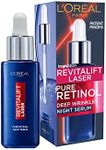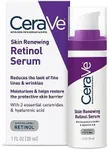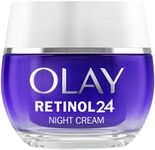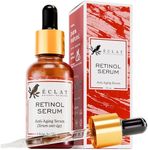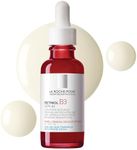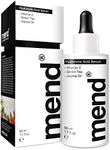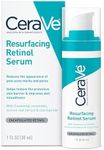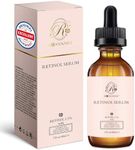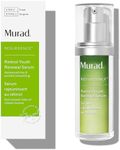Buying Guide for the Best Retinol Serums
Retinol serums are a popular skincare product known for their ability to improve skin texture, reduce the appearance of fine lines and wrinkles, and promote a more youthful complexion. When choosing a retinol serum, it's important to consider several key specifications to ensure you select the best product for your skin type and concerns. Understanding these specifications will help you make an informed decision and achieve the desired results.Retinol ConcentrationRetinol concentration refers to the percentage of retinol in the serum. This is important because higher concentrations can be more effective but also more irritating to the skin. Concentrations typically range from 0.25% to 2%. Beginners or those with sensitive skin should start with lower concentrations (0.25% to 0.5%) to minimize irritation. More experienced users or those with resilient skin can opt for higher concentrations (1% to 2%) for more potent effects. Your skin's tolerance and your specific skincare goals should guide your choice.
Formulation TypeThe formulation type of a retinol serum can affect its stability and effectiveness. Common types include encapsulated retinol, retinol esters, and pure retinol. Encapsulated retinol is often more stable and less irritating, making it suitable for sensitive skin. Retinol esters are milder and ideal for beginners. Pure retinol is the most potent and effective but can be more irritating. Choose a formulation type based on your skin's sensitivity and your experience with retinol products.
Additional IngredientsMany retinol serums include additional ingredients to enhance their benefits and reduce potential irritation. Ingredients like hyaluronic acid, niacinamide, and peptides can provide hydration, soothe the skin, and support the anti-aging effects of retinol. If you have dry or sensitive skin, look for serums with hydrating and calming ingredients. If your goal is to target multiple signs of aging, choose a serum with a combination of active ingredients that address your specific concerns.
PackagingPackaging is crucial for maintaining the stability and effectiveness of retinol. Retinol is sensitive to light and air, so serums should be packaged in opaque, airtight containers to prevent degradation. Pump bottles or tubes are preferable to jars, as they minimize exposure to air. When selecting a retinol serum, ensure the packaging is designed to protect the product and maintain its potency over time.
Skin Type CompatibilityDifferent retinol serums are formulated to suit various skin types, including dry, oily, combination, and sensitive skin. It's important to choose a serum that matches your skin type to avoid irritation and achieve the best results. For dry skin, look for serums with moisturizing ingredients. For oily or acne-prone skin, opt for lightweight, non-comedogenic formulas. If you have sensitive skin, choose a serum with a lower concentration of retinol and soothing ingredients.
Usage InstructionsProper usage of retinol serums is essential to avoid irritation and maximize benefits. Usage instructions typically include how often to apply the serum and whether it should be used in the morning or evening. Beginners should start with applying the serum once or twice a week and gradually increase frequency as their skin builds tolerance. Always follow the product's instructions and consider your skin's response to determine the best usage routine for you.
